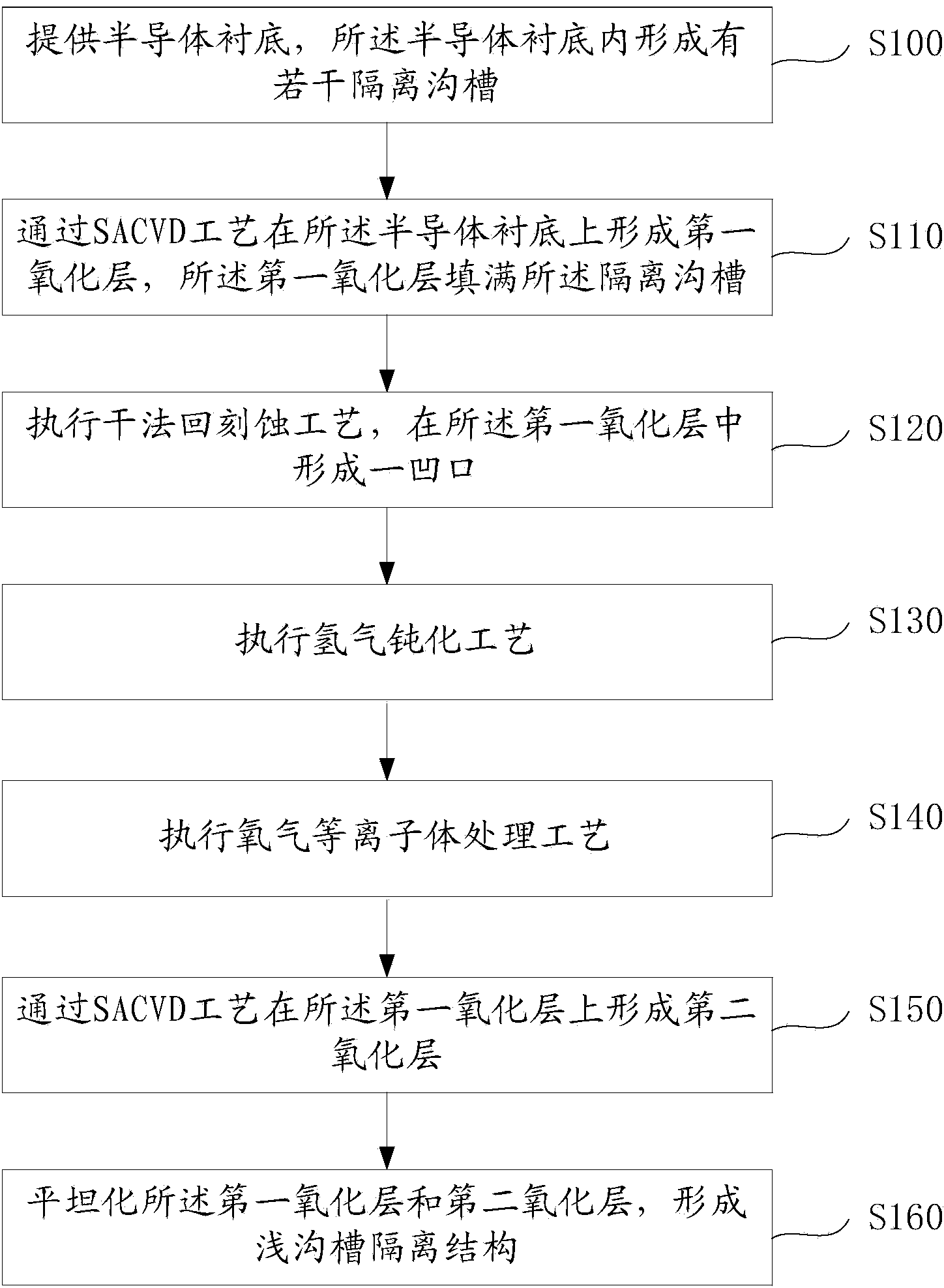Method for forming shallow trench isolation structure
An isolation structure and shallow trench technology, applied in electrical components, semiconductor/solid-state device manufacturing, circuits, etc., can solve the problem of poor isolation performance of shallow trench isolation structure, semiconductor devices prone to leakage, affecting the stability of semiconductor devices, etc. problems, to achieve the effect of eliminating the Q-time effect, improving the uniformity of film thickness, and being less prone to leakage.
- Summary
- Abstract
- Description
- Claims
- Application Information
AI Technical Summary
Problems solved by technology
Method used
Image
Examples
Embodiment Construction
[0030] As described in the background art, as the feature size of semiconductor devices continues to decrease, the size of the shallow trench isolation structure used for device isolation also becomes smaller, and the aspect ratio of the isolation trench used to form the shallow trench isolation structure changes. When the oxide layer is filled and formed in the isolation trench through the SACVD process, fragile surfaces are likely to appear, resulting in poor isolation performance of the shallow trench isolation structure, and semiconductor devices containing the shallow trench isolation structure are prone to leakage and poor stability. For this reason, after the first oxide layer is formed by the SACVD process in the present invention, a dry etching process is performed to eliminate the fragile surface, and then the second oxide layer is formed by the SACVD process, and then the planarization process is performed, thereby forming a shallow trench The isolation effect of the ...
PUM
 Login to View More
Login to View More Abstract
Description
Claims
Application Information
 Login to View More
Login to View More - R&D
- Intellectual Property
- Life Sciences
- Materials
- Tech Scout
- Unparalleled Data Quality
- Higher Quality Content
- 60% Fewer Hallucinations
Browse by: Latest US Patents, China's latest patents, Technical Efficacy Thesaurus, Application Domain, Technology Topic, Popular Technical Reports.
© 2025 PatSnap. All rights reserved.Legal|Privacy policy|Modern Slavery Act Transparency Statement|Sitemap|About US| Contact US: help@patsnap.com



